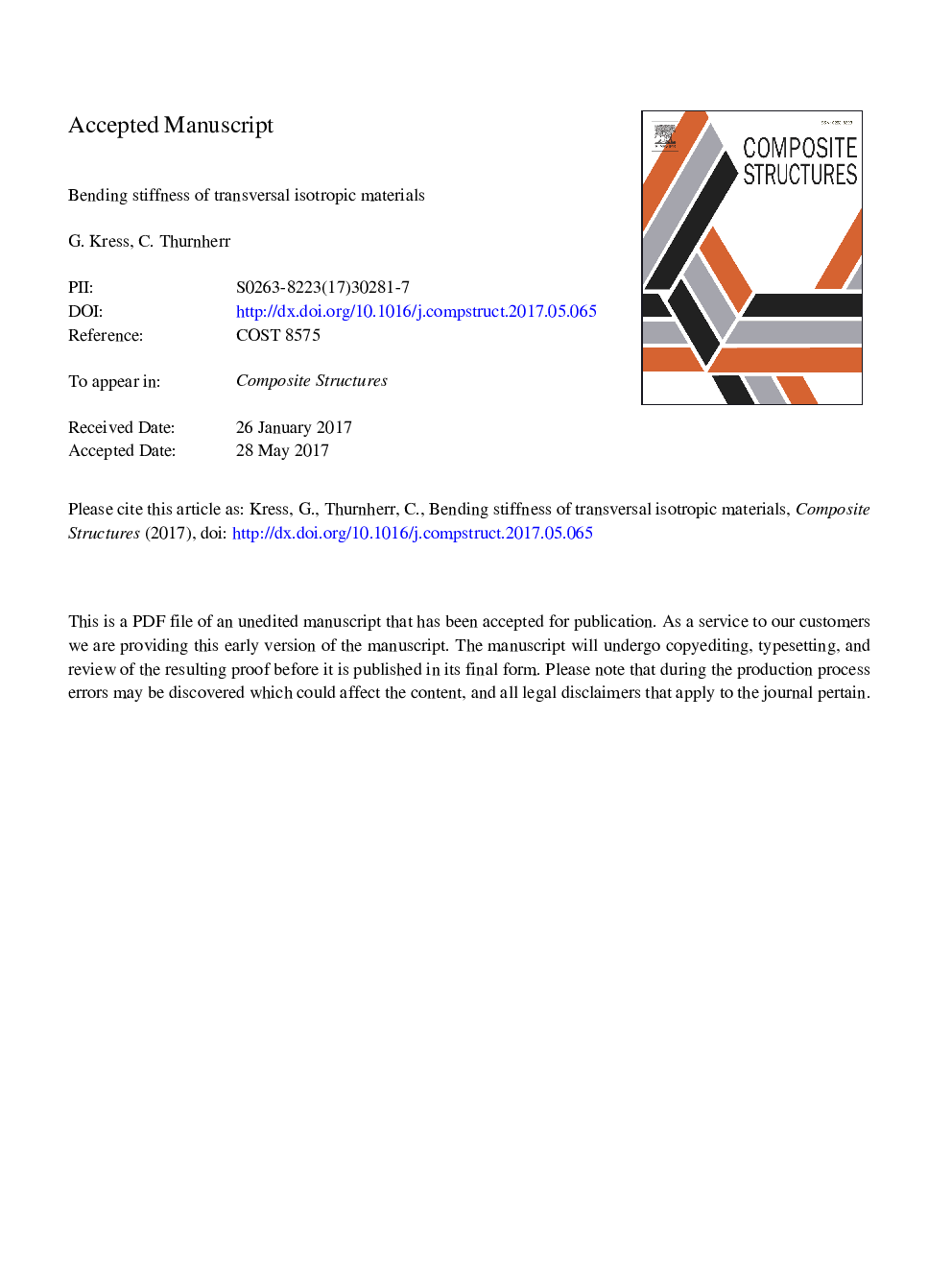| Article ID | Journal | Published Year | Pages | File Type |
|---|---|---|---|---|
| 4911758 | Composite Structures | 2017 | 14 Pages |
Abstract
Quasi-static bending of anisotropic and macroscopic homogeneous materials is studied as a two-dimensional elasticity problem. We extend a solution for beam-bending of isotropic materials found in the literature (Bower, 2010), where our selected form of a transversal isotropic material allows for a scalar Airy stress function which demonstrates exactness of the interior solution. We also consider the plane-strain assumption to simulate cylindrical plate bending. However, violation of the essential boundary condition of the axial component of the inadmissible displacement field increases with increasing degree of anisotropy and we show that minimization of the violation in an average sense is effected by rigid-body rotation. Calculated center-line deflections reproduce Timoshenko's beam theory and its equivalent for cylindrical plate bending. The shear-correction factors of both depend on the degree of anisotropy and on Poisson's ratio. The accuracy of the theories is verified by comparison with FEM simulations. Finally, we address measurement of Young's modulus from standard three-point-bending tests and suggest that, given the typical specimen's rectangular cross-sectional aspect-ratios where the width is much larger than the height, an evaluation formula based on the plane-strain assumption gives more accurate results than the formulas suggested in the literature, which are based on the plane-stress assumption.
Keywords
Related Topics
Physical Sciences and Engineering
Engineering
Civil and Structural Engineering
Authors
G. Kress, C. Thurnherr,
